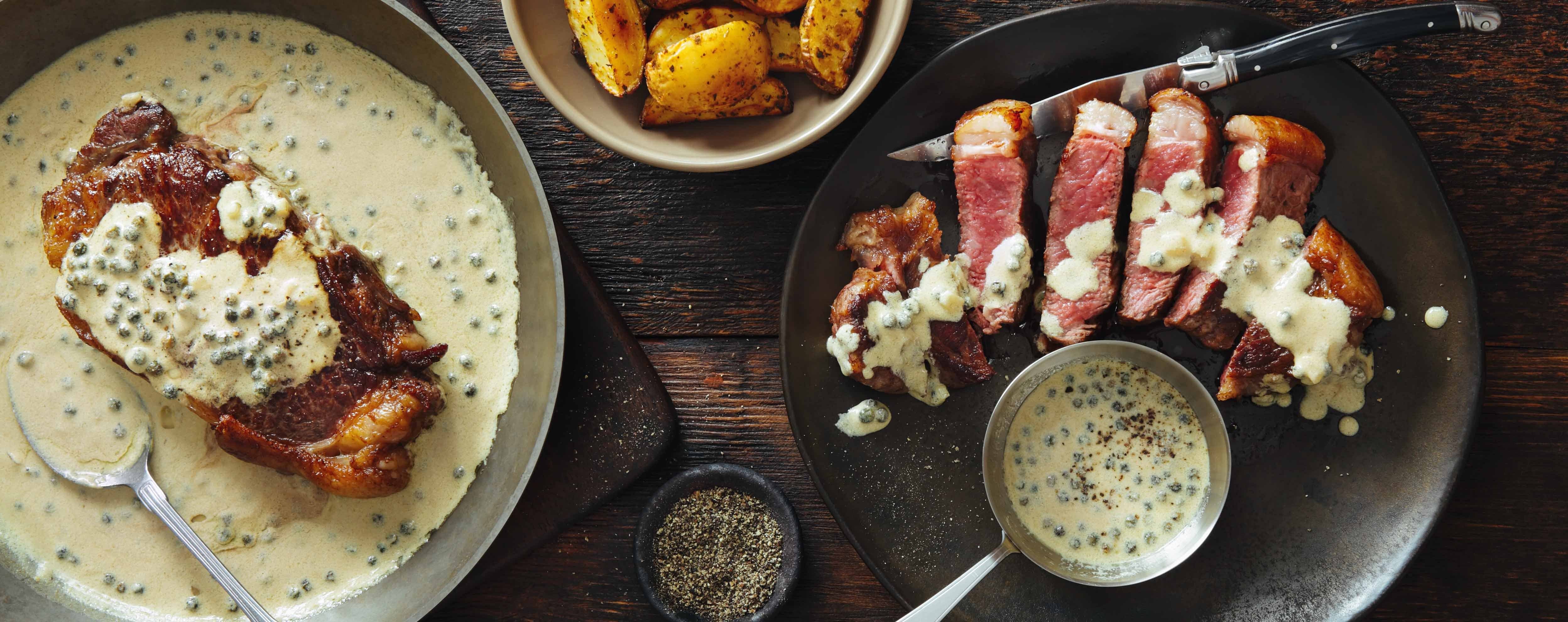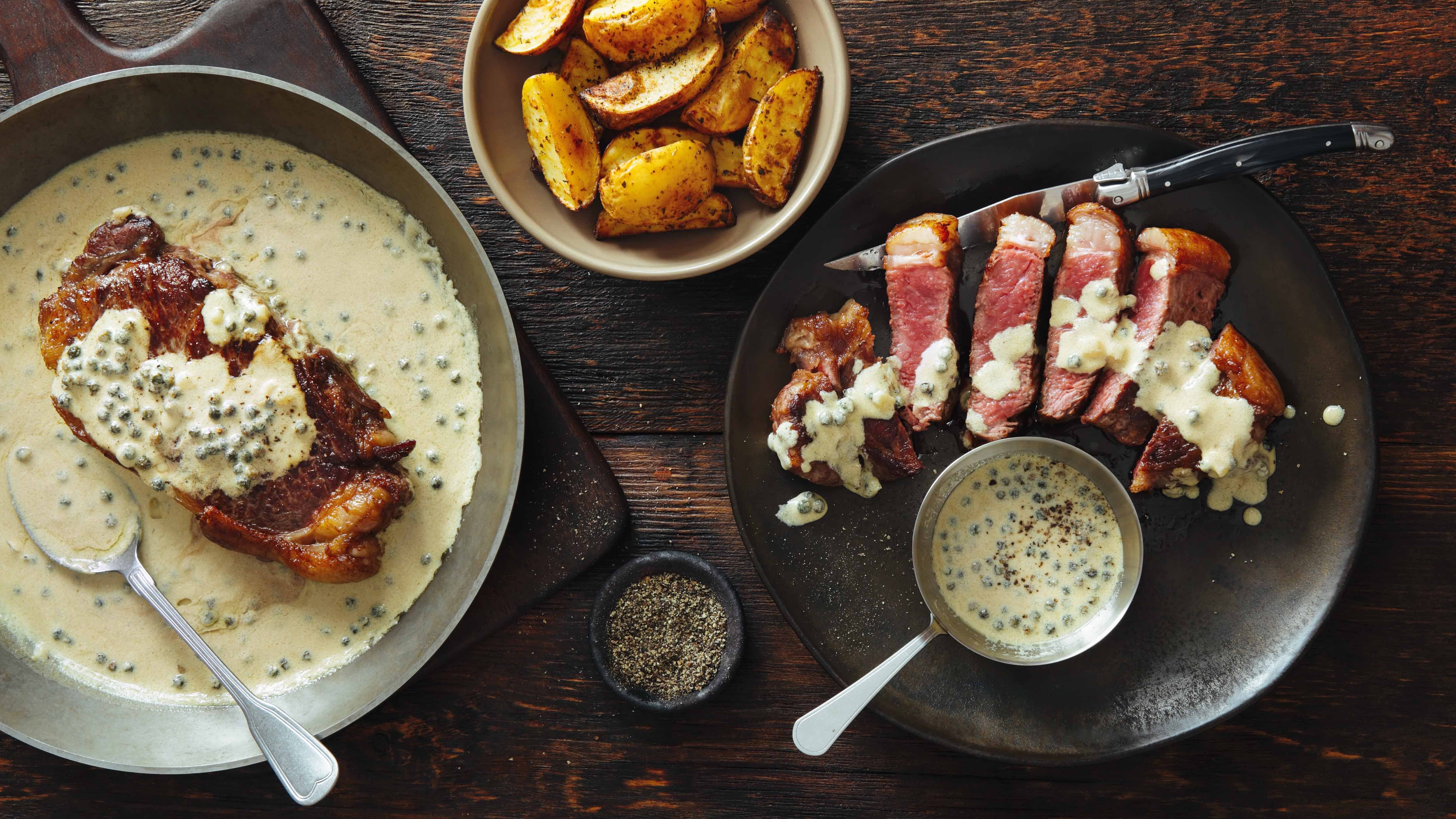Have your steak and eat it too


If you love a good steak but have been eschewing fattier cuts for lean and extra-lean steaks, you’ve probably noticed a difference in how the meat responds to marinade as well as its texture and flavour. The trick to making leaner cuts of meat truly shine lies in the preparation and cooking method (in other words, you have to think outside the box.) The following tips will help you prepare flavourful, non-chewy steaks your whole family will love.
How to make a lean or extra-lean steak shine
Marinate like you are a pro. Flank steak (3 SmartPoints per 3 oz) and skirt steak (5 SmartPoints per 3 oz) are both examples of lean meat that will benefit from an acidic, highly flavourful marinade. Lemon or lime juice, soy sauce, red wine, rice vinegar, sherry vinegar, or even buttermilk or even plain yogourt will do wonders in terms of tenderizing a tough cut of meat (skip the oil for a lower fat marinade.) Smashed raw garlic, spicy peppers, lemon grass, fresh rosemary, and ginger root are ideal aromatics for potent marinades. Marinate for at least half an hour but be careful to remove the meat after the two-hour mark in order to avoid texture deterioration.
Consider the slow cooking approach (and finish with a reverse sear.) Some cuts of steak, such as hangar steak, shank steak or tri-tip, are at their best when cooked at a very low temperature for a long period of time (either dry or in liquid.) Don’t worry, you can still achieve a picture-perfect seared look by briefly grilling the steak over high heat after it’s been removed from the oven.
Try the sous-vide cooking method. Cooking steak in a water bath, also known as the sous vide method, is a foolproof way to ensure an accurate internal temperature without any room for error. The meat is placed in a resealable or vacuum sealed bag, placed in a water bath that has been set to a predetermined temperature and slowly “cooked” until it reaches the correct temperature (depending on the cut of meat, this process can take anywhere from a couple of hours to an entire day to complete.) The steak can then be removed from the bag and quickly seared over high heat for maximum flavour.
Cut against the grain. Lean and extra-lean steaks (and roasts) should always be cut against the grain. This means that instead of carving alongside the muscle fibres, you’re slicing right through them. This technique helps to tenderize the meat by cutting the muscle fibres into very small pieces. You’ll find that steak cut with the grain is very chewy and difficult to eat, this is because your teeth have to work hard to break down the muscle fibres on their own.
Two different ways to tell if a steak is done
Using a meat thermometer is a fail proof way to ensure your steak is cooked to perfection, making it ideal for the beginner home cook. Insert a meat thermometer into the thickest part of the steak and measure the temperature, using the Health Canada guidelines below to help you determine the steak’s doneness.
- Medium-rare 63°C or 145°F
- Medium 71°C or 160°F
- Well-done 77°C or 170°F
More experienced cooks can try using the tips of their fingers as a reference point for a steak’s level of doneness. A medium-rare steak should feel like your middle finger touching the tip of your thumb. A medium steak will feel like your ring finger touching your thumb. Finally, a well-done steak is comparable to the feeling of touching your pinkie finger to your thumb.
Low SmartPoints steak toppings
Pico de Gallo: Finely diced tomato, white onion, jalapeño pepper, loosely torn cilantro, juice of 2-3 limes, and salt. – 0 SmartPoints
Horseradish sauce: Heaping ¼ cup plain nonfat yogourt, 1 tablespoon mayonnaise, 1 teaspoon Dijon mustard, prepared horseradish (to taste), fresh chives or scallion greens, salt, and freshly cracked pepper. 2 SmartPoints (serves 2)
Cherry salsa: Pitted and chopped cherries, diced heirloom Black tomatoes (or other dark fleshed varietal), finely diced poblano pepper and red onion, orange juice from half an orange, fresh basil cut in a chiffonade, and salt. 0 SmartPoints
Roasted red pepper sauce: Blend together 1 jar of roasted red peppers, 2 tablespoons of roasted red pepper brine, 1 tablespoon pickled capers, 6 pitted kalamata olives, ¼ cup curly parsley, and 2 tablespoons feta cheese. 2 SmartPoints (serves 2)
